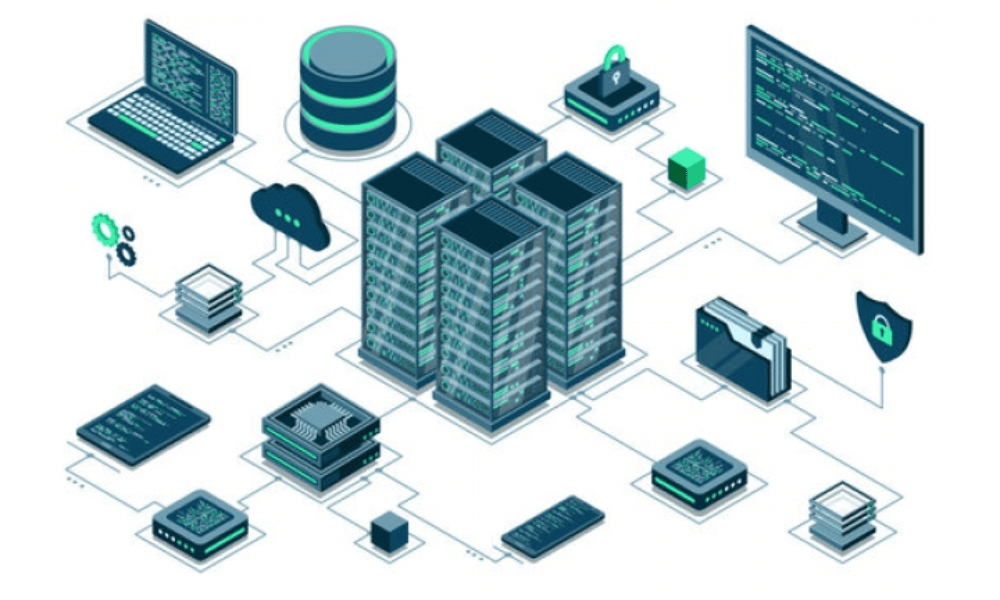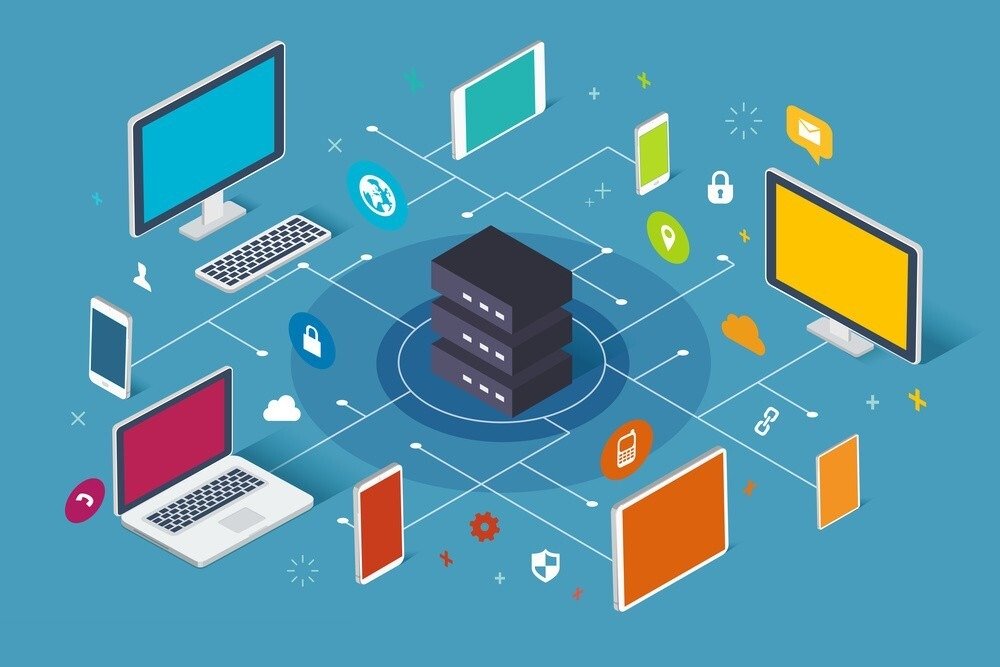You may have heard of E-LAN and E-Line services, which are Ethernet transport services for connecting local area networks (LANs) together. But do you know what these terms mean and what are the differences between these two types of services? In this article, we will explain to you what E-LAN and E-Line services are, what their advantages and disadvantages are, and how to choose the most suitable service for your needs.
What is an E-LAN service?

An E-LAN service, or Ethernet LAN , is a service that allows multiple remote sites to be connected together using a shared Ethernet network . The E-LAN service thus creates a virtual network which connects all participating sites, as if they were part of the same local network. The E-LAN service is therefore a multipoint-to-multipoint service, which offers great flexibility and scalability. The E-LAN service can be based on different transport technologies, such as SD Wan or MPLS , depending on the needs and constraints of each customer .
The E-LAN service has several advantages:
- It simplifies management , using the same Ethernet protocol on all sites.
- It helps infrastructure costs
- It helps facilitate communication between sites, providing seamless connectivity and guaranteed quality of service.
- It helps secure data , using encryption and authentication mechanisms.
The E-LAN service also has some disadvantages:
- It requires sufficient bandwidth to support traffic between all sites, which can be expensive or difficult to obtain depending on geographic areas.
- It may be subject to performance or congestion problems if the shared Ethernet network is saturated or poorly sized.
- It may be less suitable for latency-sensitive applications , such as voice or video, which require fast, delay-free transmission.
What is an E-Line service?

An E-Line service, or Ethernet Line , is a service that connects two remote sites to each other using a dedicated Ethernet network. The E-Line service thus creates a virtual link that connects the two participating sites, as if they were connected by an Ethernet cable. The E-Line service is therefore a point-to-point service, which offers high reliability and high performance.
The E-Line service has several advantages:
- It guarantees quality of service , by offering reserved bandwidth and low latency between the two sites.
- It helps protect data , using isolation and confidentiality mechanisms.
- It allows adaptation to specific needs , offering the possibility of choosing the type of Ethernet interface (10 Mbit/s, 100 Mbit/s, 1 Gbit/s, etc.) and the type of service (best effort, priority, etc.).
The E-Line service also has some disadvantages:
- It requires dedicated infrastructure for each link, which can be expensive or complex to set up.
- It limits network flexibility , by not allowing participating sites to be easily added or removed.
- It may be less suitable for distributed applications , which require communication between multiple sites.
How to choose between E-LAN and E-Line?

The choice between an E-LAN service or an E-Line service essentially depends on your needs in terms of connectivity, performance, cost and security. Here are some criteria that can help you make your choice:
- If you need to connect several sites together , with great flexibility and scalability, you can opt for an E-LAN service.
- If you need to connect two sites together , with high reliability and high performance, you can opt for an E-Line service.
- If you need to reduce infrastructure costs and simplify network management , you can opt for an E-LAN service.
- If you need to guarantee quality of service and protect data , you can opt for an E-Line service.
- If you need to adapt to the specific needs of each site, you can opt for an E-Line service.
- If you need to facilitate communication between sites , you can opt for an E-LAN service.
FAQs
Here are some frequently asked questions about E-LAN and E-Line services:
What is the difference between E-LAN and VLAN?
A VLAN, or Virtual LAN , is a mechanism that allows you to create logical subnetworks within the same physical network. A VLAN therefore makes it possible to separate traffic between different groups of users or applications, based on criteria such as MAC address or port. An E-LAN, for its part, is a service that allows you to create a virtual network between several remote sites, using a shared Ethernet network. An E-LAN therefore makes it possible to link traffic between different local networks, based on criteria such as the IP address or the VLAN.
What is the difference between E-Line and VPN?

A VPN, or Virtual Private Network , is a mechanism that allows you to create a secure connection between two remote sites, using a public network such as the Internet. A VPN therefore makes it possible to protect the data exchanged between the two sites, using encryption and authentication mechanisms. How to choose the right VPN? Several criteria must be taken into account, such as the level of security, speed, cost, compatibility and ease of use. An E-Line, for its part, is a service which allows you to create a dedicated link between two remote sites, using a dedicated Ethernet network. An E-Line therefore makes it possible to guarantee quality of service between the two sites, by offering reserved bandwidth and low latency time.
What are the advantages and disadvantages of Ethernet services compared to MPLS services?
services and MPLS services are two types of transport services that can be used to connect local networks together. Ethernet services use the Ethernet protocol as layer 2 of the OSI model, while MPLS services use the MPLS protocol as layer 2.5 of the OSI model . Ethernet services have the following advantages over MPLS services:
- They are simpler to implement and manage because they use the same protocol as local networks.
- They are more economical, because they require less equipment and fewer licenses.
- They are more compatible, since they can interface with any type of Ethernet equipment.
MPLS services have the following advantages over Ethernet services:
- They are more efficient because they use encapsulation and labeling techniques that optimize packet routing.
- They are more flexible, because they can offer different types of services (L2VPN, L3VPN, TE, etc.) according to customer needs.
- They are more secure, since they can use protective and catering mechanisms in the event of a breakdown.
Who are the main E-LAN and E-Line service providers in France?

In France, there are several providers who offer E-LAN and E-Line services to businesses . Among them, we can cite:
- Orange Business Services : The French Telecommunications Market Leader for companies, which offers tailor -made Ethernet solutions adapted to customer needs.
- SFR Business : the second French telecommunications operator for companies, which offers flexible and scalable Ethernet solutions based on its fiber optic network.
- Bouygues Telecom Entreprises : the third French telecommunications operator for companies, which offers innovative and personalized Ethernet solutions based on its very high speed network.
- Colt Technology Services : An international operator specializing in Ethernet services for companies, which offers high -quality Ethernet solutions and low latency on its pan -European fiber optic network.
- Interoute : an international operator that offers Ethernet services integrated into its cloud network, which offers global connectivity and reinforced security.
How to test the quality of an e-lan or e-line service?
To test the quality of an e-lan or e-line service , there are several tools and methods that can be used. Among them, we can quote:
- Network performance measurement tools, such as Iperf or Ping , which allow you to measure the bandwidth, latency time, jig or loss of packages between two sites.
- Network diagnostic tools, such as tracery or MTR , which allow you to view the path taken by packages between two sites and identify any congestion or failure points.
- Network certification tools, such as Netxpert or Etherscope , which make it possible to verify compliance with Ethernet Service standards and specifications (interface type, service type, quality of service, etc.).
Conclusion
The E-Lan and E-Line services are Ethernet transport services that allow local networks to be connected to each other. They each have the advantages and disadvantages according to the needs in terms of connectivity, performance, cost and security. The choice between these two types of services therefore essentially depends on the criteria specific to each company. To test the quality of an e-lan or e-line service , there are several tools and methods that can be used.




